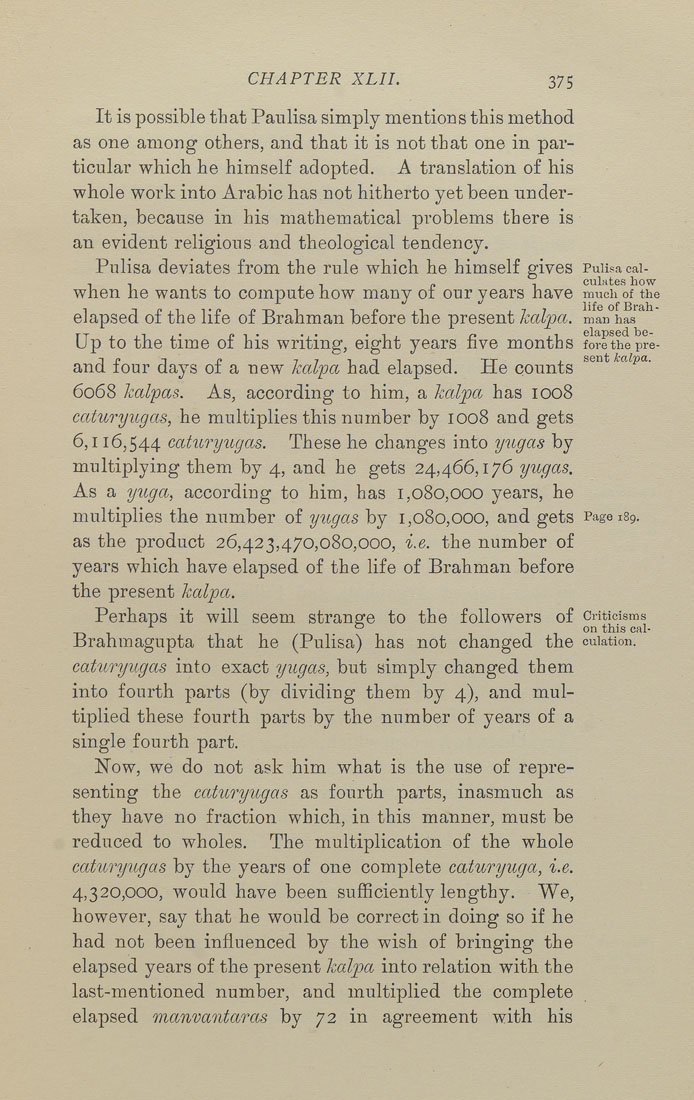CHAPTER XLII. 375
It is possible that Paulisa simply mentions this method
as one among others, and that it is not that one in par¬
ticular which he himself adopted. A translation of his
whole work into Arabic has not hitherto yet been under¬
taken, because in his mathematical problems there is
an evident religious and theological tendency,
Pulisa deviates from the rule which he himself gives PuUsa cai-
, , 1 f 1 dilates how
when he wants to compute how many ot our years have much of the
elapsed of the life of Brahman before the present kalpa. man has
Up to the time of his writing, eight years five months forethepre-
and four days of a new kalpa had elapsed. He counts ^'^^ ^'^"'
6068 kalpas. As, according to him, a kalpa has 1008
caturyugas, he multiplies this number by 1008 and gets
6,116,544 caturyugas. These he changes into yugas by
multiplying them by 4, and he gets 24,466,176 yugas.
As a yuga, according to him, has 1,080,000 years, he
multiplies the number of yugas by 1,080,000, and gets Page 189.
as the product 26,423,470,080,000, i.e. the number of
years which have elapsed of the life of Brahman before
the present kalpa.
Perhaps it will seem strange to the followers of Criticisms
" on this cal-
Brahmagupta that he (Pulisa) has not changed the ouiation.
caturyugcts into exact yugas, but simply changed them
into fourth parts (by dividing them by 4), and mul¬
tiplied these fourth parts by the number of years of a
single fourth part.
Now, we do not ask him what is the use of repre¬
senting the caturyugas as fourth parts, inasmuch as
they have no fraction which, in this manner, must be
reduced to wholes. The multiplication of the whole
caturyugas by the years of one complete caturyuga, i.e.
4,320,000, would have been sufficiently lengthy. We,
however, say that he would be correct in doing so if he
had not been influenced by the wish of bringing the
elapsed years of the present kaljxt into relation with the
last-mentioned number, and multiplied the complete
elapsed manvantaras by 72 in agreement with his
|








